Vatican country profile
- Published
This page is no longer being updated. It was last updated on 17 November 2023
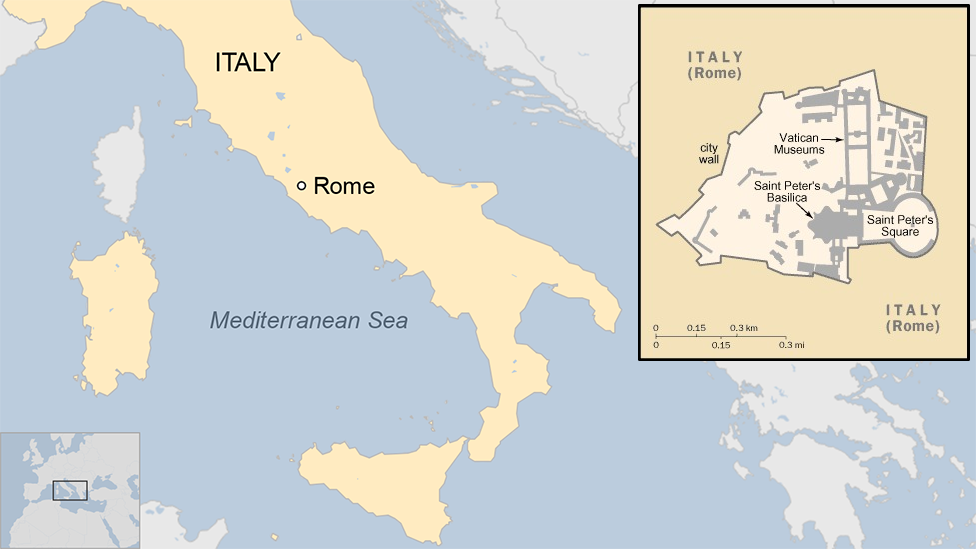
The Vatican is the smallest independent state in the world and residence of the spiritual leadership of the Roman Catholic Church.
Its territory is surrounded by the Italian capital city Rome, and priests and nuns of many nationalities make up almost all of the population.
The Vatican City is a tiny fragment when compared with the extensive Papal States of central Italy, which were conquered by the forces of Italian unification in the mid-19th Century. The popes then became "prisoners in the Vatican", unwilling to leave the confines of the Apostolic Palace until 1929, when Italy's Fascist government negotiated the Lateran Treaty that created the current mini-state.
The Vatican City itself packs many imposing buildings into its small area. These include St Peter's Basilica, a pilgrimage site. The Vatican Museums and Art Galleries house the priceless art collections of the popes.
On a more profane level, the Vatican has moved to meet international demands for more financial transparency following an investigation in 2010 into the Vatican Bank over violations of money-laundering rules.
Read more country profiles, external - Profiles by BBC Monitoring, external
VATICAN CITY STATE: FACTS
Capital: Vatican City
Area: 0.49 sq km
Population: 453
Languages: Latin, also Italian
Life expectancy: 82 years
LEADER
Head of state: Pope Francis
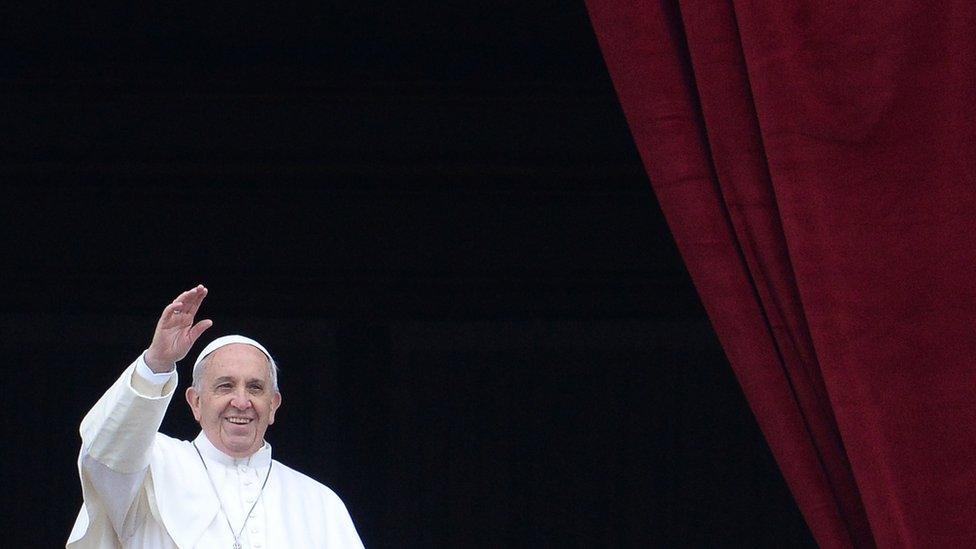
Cardinals elected the first Latin American pope in March 2013, choosing Cardinal Archbishop Jorge Mario Bergoglio of Buenos Aires to succeed Pope Benedict XVI, who had resigned over ill-health after a reign of eight years.
At 76 he was only two years younger than Benedict at the time of his election, confounding expectations that the cardinals would opt for a younger candidate to lead the Catholic Church through the many challenges it faces.
Moreover, when he was young he had part of a lung removed, which raised doubts about his stamina in this demanding post.
He had broad appeal in the College of Cardinals, being conservative on homosexuality but liberal on such social issues as poverty and inequality.
MEDIA
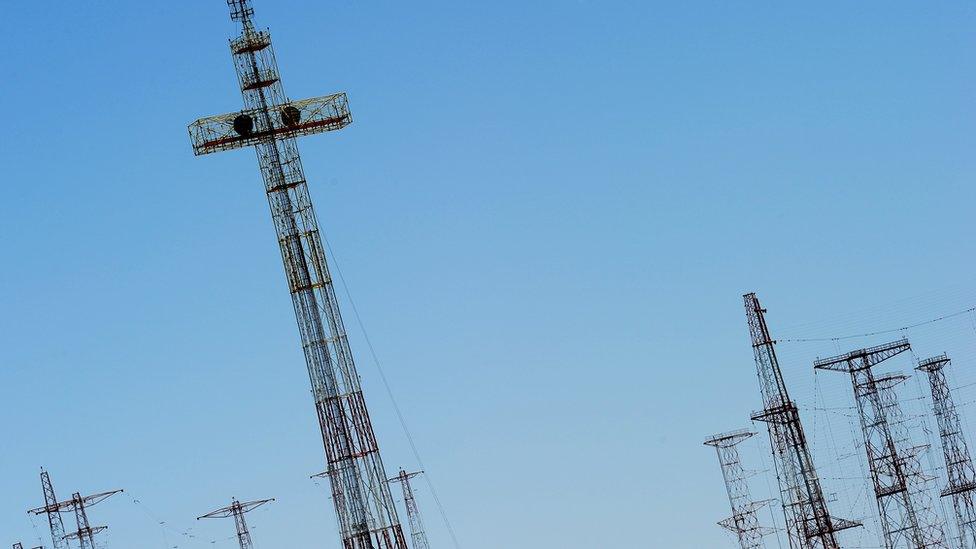
Powerful transmitters beam Vatican Radio - "The Pope's Voice" - to a global audience.
But the station has faced allegations that its transmissions have been putting lives at risk in a Rome suburb by exceeding Italy's electromagnetic radiation standards - claims the Vatican denies.
The papacy maintains a Twitter account, @pontifex, external.
TIMELINE

Pilgrims travel from all over the world to gather in St Peter's Square for various ceremonies
509-27BC - The name "Vatican" is already in evidence during the Roman Republic for the Ager Vaticanus, a marshy area on the west bank of the Tiber across from the city of Rome.
c. 40-60AD - Construction of the Circus of Nero. The Vatican Obelisk in St Peter's Square is the last visible remnant of this circus. Brought from Egypt by Emperor Caligula it originally stood at the centre of the circus. The circus becomes a place of execution for many Christians after a major fire in Rome in 64AD, including, traditionally, St Peter. The obelisk is relocated to its current position by Sixtus V in 1586.
313 - Edict of Milan recognises the legal status of the Catholic Church
c. 320-360 - Construction of the Constantinian Basilica of St Peter, or Old St Peter's Basilica on the site of the Circus of Nero and the traditional site of Saint Peter's tomb.
476 - Fall of the Western Roman Empire. The temporal power of the popes in central Italy increases.
756-1870 - Papal States. A series of territories in the Italian Peninsula under the direct sovereign rule of the pope. The state had its origins in the rise of Christianity throughout Italy, and with it the rising influence of the Christian Church.
800 - Pope Leo III crowns Charlemagne as Roman Emperor. With the decline of the Byzantine Empire in Italy, the Papacy becomes effectively sovereign. Several Christian rulers, including the Frankish kings Charlemagne and Pepin the Short, further donate lands to be governed by the Church.
1054 - The Great Schism. The break the Roman Catholic and Eastern Orthodox churches. It is preceded by a series of ecclesiastical differences and theological disputes between the Greek East and Latin West.
During the Renaissance, the papal territory expands and popes become key secular rules in Italy, as well as the heads of the Church. At their zenith, the Papal States covered most of central Italy including Rome.
1506-1626 - St Peter's Basilica is built to replace the aging Old St Peter's Basilica. It is one of the most renowned works of Italian Renaissance and Baroque architecture
1517 - Traditional date for the start of the Protestant Reformation, a major theological movement in Western Christianity that poses a religious and political challenge to the papacy and the authority of the Catholic Church. It is triggered when German theologian Martin Luther publishes his Ninety-five Theses.
1545-1563 - The Council of Trent, in northern Italy. Prompted by the Protestant Reformation it issues key statements and clarifications of the Church's doctrine and teachings. It is seen as the embodiment of the Catholic Counter-Reformation.
1555 - Peace of Augsburg makes the legal division of Christianity permanent within the Holy Roman Empire, allowing rulers to choose either Lutheranism or Catholicism as the official confession of their state.
1648 - Peace of Westphalia ends the Thirty Years' War (1618-48). It broadly marks the end in Europe of a sustained period of wars of religion by recognising three separate Christian traditions in the Holy Roman Empire: Roman Catholicism, Lutheranism, and Calvinism.
1861 - Much of the Papal States' territory is conquered by the newly-unified Kingdom of Italy. Only Lazio, including Rome, remains under the pope's control.
1870 - Italian forces take Rome. Italy offers to create a city-state for the Catholic Church in the area, but popes from Pius IX and his successors refuse to accept this and describe themselves as prisoners of the new Italian state.
1929 - Lateran Treaty signed by Pius XI with Italy's fascist leader Benito Mussolini[ creates the State of the Vatican City, forming the sovereign territory of the Holy See.
1939-45 - During World War Two, the Vatican pursues a policy of neutrality under Pius XII.
1962 - John XXIII calls the Second Ecumenical Vatican Council. It oversees extensive reform of the liturgy, and new approaches to relations between the Church and the world, other Christian churches, non-Christian religions and to religious freedom.
1978 - Accession of John Paul II after the death of John Paul I, pope for just 33 days. The first non-Italian pope since Adrian VI in the 16th Century. He is seen by many as a key figure in helping to bring down communism in eastern Europe by sparking what amounted to a peaceful revolution in his Polish homeland.
2013 - Benedict XVI becomes the first modern pope to resign from the role, due to his ill health. Pope Francis becomes the first Jesuit pope and the first pope from the Americas.

The Vatican is surrounded by the Italian capital city of Rome, and priests and nuns of many nationalities make up almost all of the population
Related topics
- Published4 October 2023
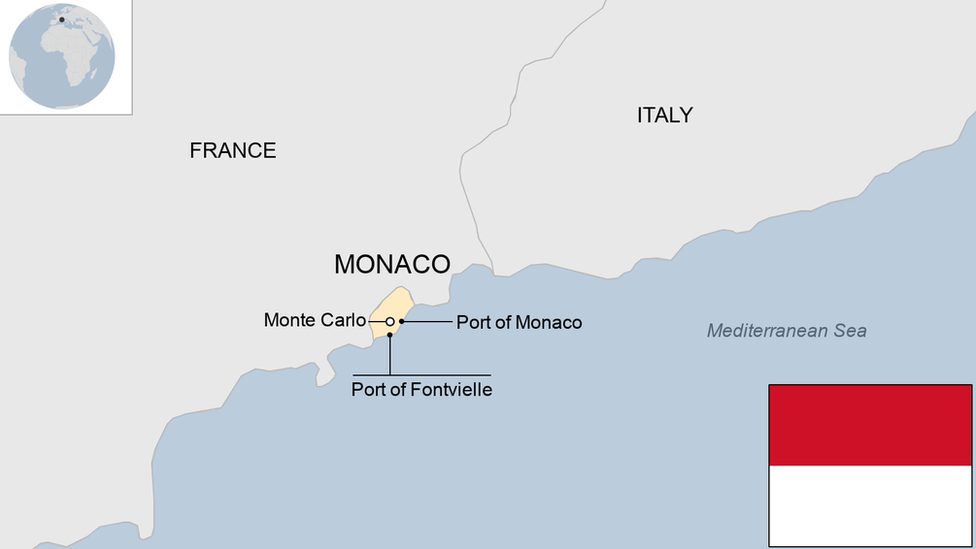
- Published4 October 2023
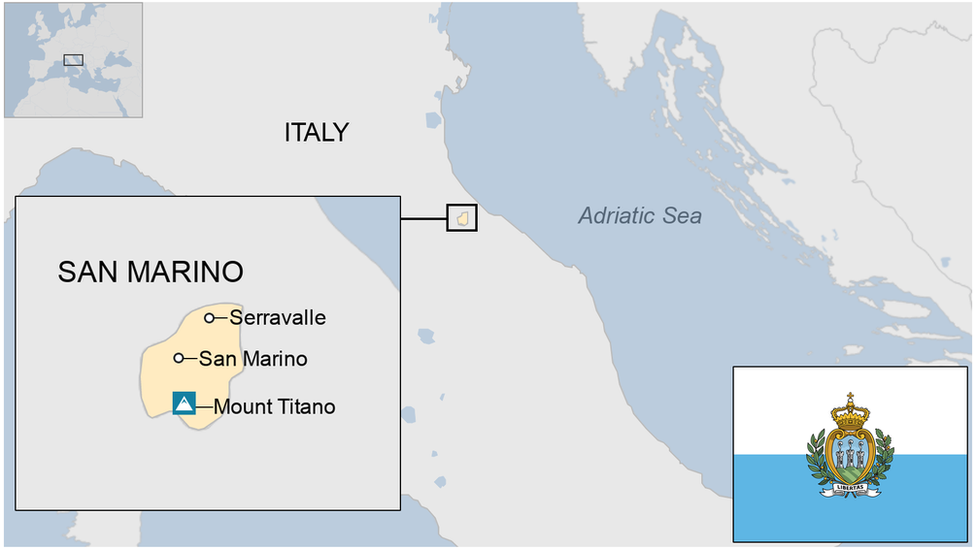
- Published4 October 2023

- Published19 June 2023
